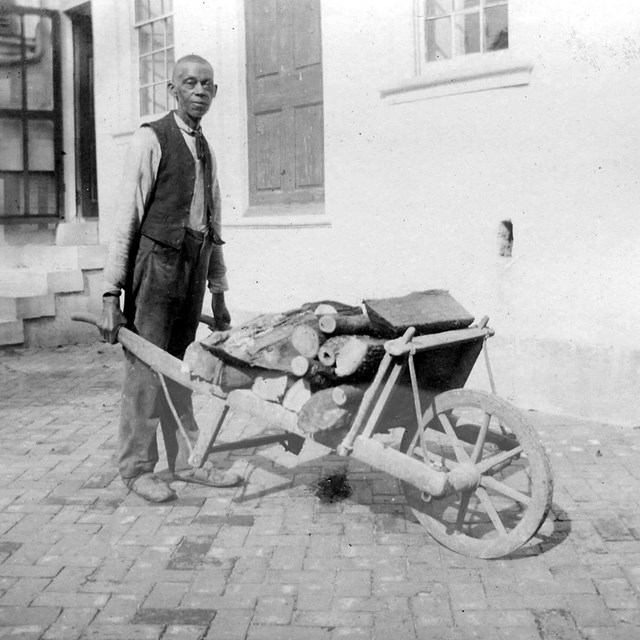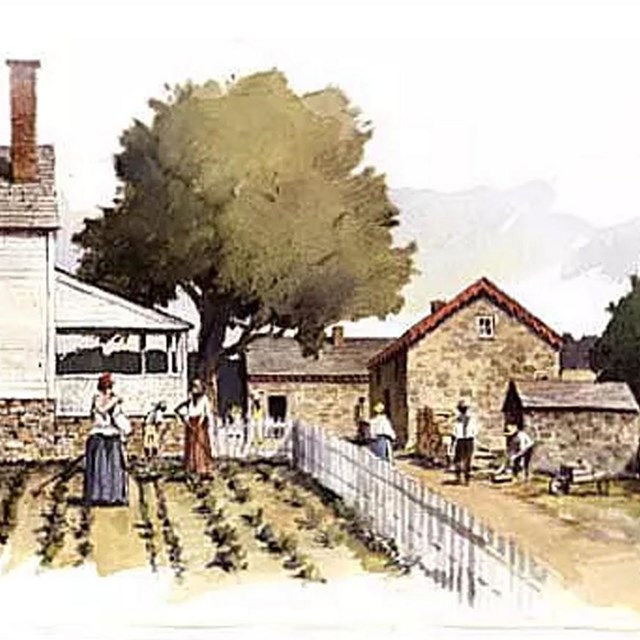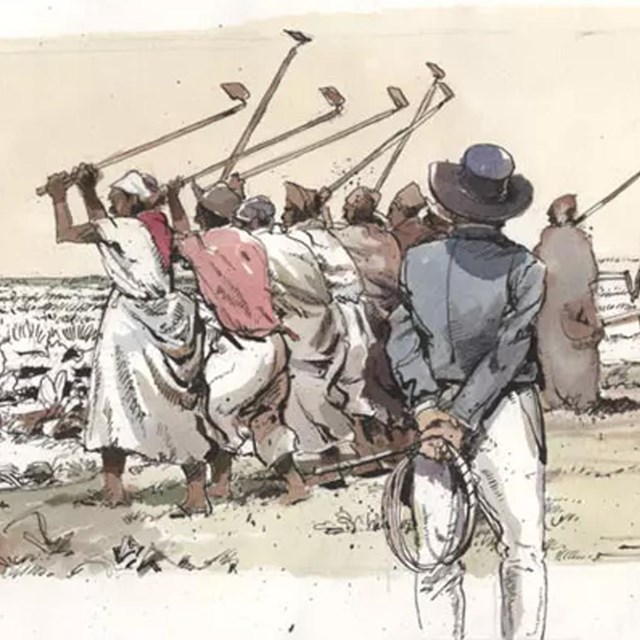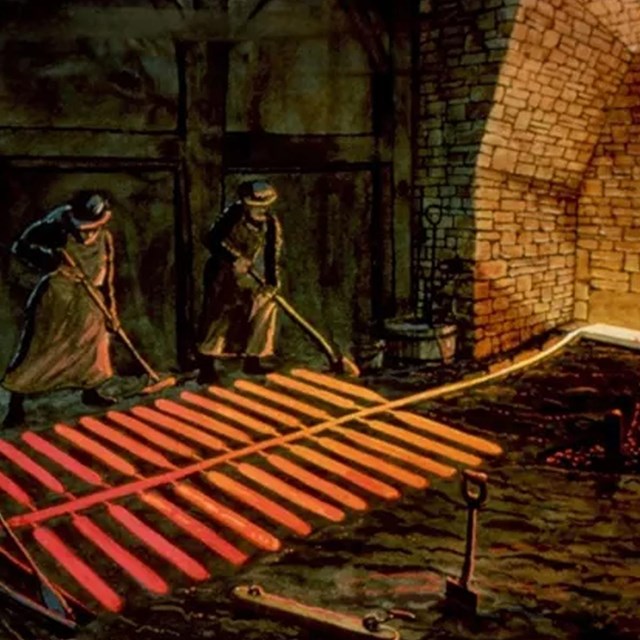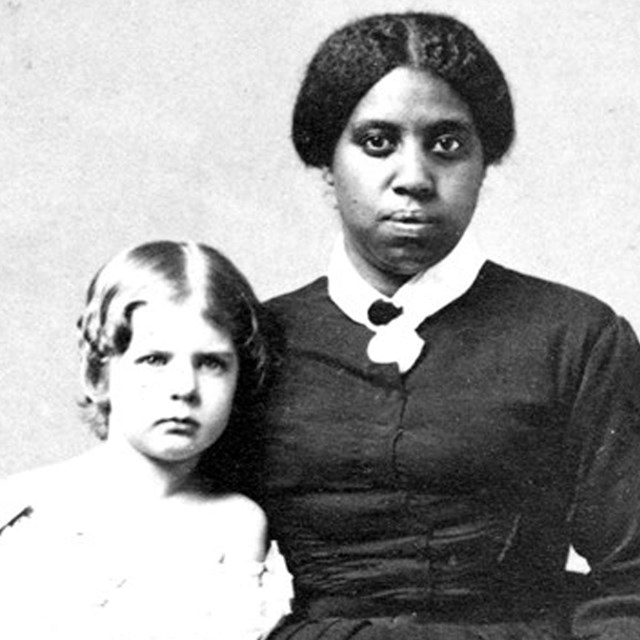
NPS Mark Posey was perhaps the highest ranking enslaved individual in the Hampton household prior to emancipation in 1864. As head waiter, he received special clothing, gifts, and perks, such as a “very good” yellow waistcoat that had belonged to his enslaver John Ridgely. Yet in 1852, his 15-year old daughter Rebecca chose to seek her freedom, despite the dangers involved. Rebecca was not returned and is documented as living in Baltimore City by the mid-1860s. Louisa Humphries (1839-lv. 1870) and Mark Posey (1815-lv. 1880) had two children born while still enslaved at Hampton, a son Edward/Ned (named for his Humphries grandfather) born around 1861 and girl Mary Jane born in 1863. After Emancipation, the Posey family including another daughter Nancy Rebecca (baptized at Trinity Episcopal Church in August 1865) moved to Towson, where they lived with Louisa's parents Edward and Peggy "Umphreys," as the name was recorded by the census taker in 1870. Another son, named Mark John for his father, was born and baptized at Trinity in January 1871. As noted above, Mark Posey was a key member of the Hampton household. As described by Eliza Ridgely III in an annotation to an account book, he was "A waiter at Hampton, and a good one." In addition to serving a table, a head waiter was responsible for the care of the fine porcelain, glass, and silver on display in the Dining Room, keeping the lighting fixtures in good order, admitting guests to the house, and numerous other duties. A head waiter was often in the public eye, and was expected to dress well. In 1835, for example, Mark received numerous items related to his position (livery "roundabout" (cape), white aprons, gloves, etc., plus fine clothing such "a yellow cloth waistcoat [vest] of Mr. R.'s, very good one" or a “gold laced” livery coat. As a young man in the late 1830s-1840s, Mark had been the father of several children by Rachel, a house servant who had also had two or three children probably by paid farm worker (who had formerly been enslaved by Charles Carnan Ridgely) Charles Hazard in the early 1830s. Mark and Rachel's first child was Rebecca, born in 1837, and followed by two more daughters in the early 1840s (Mary, Alice). Alice Posey was recorded by Didy Ridgely on the Christmas Gifts list as being her "first protégé" in 1845, but she died while Didy was away in Europe for two years in 1846-1848. Alice Posey's older sister Rebecca Posey had a very different experience than her sister the protégé. In the 1840s, as a small child, she worked in the kitchen under the supervision of Dinah Toogood. By the time she turned 14, she was considered too old for toys at Christmas, so Didy's list notes she was given an apron. The following year (1852) is the terse comment by Didy next to Becky's name on the list: "gone". It is yet unclear why Rebecca Posey sought her freedom alone. It was extremely rare for women to flee alone as Rebecca did on August 20, 1852. " RAN AWAY from the farm of John Ridgely, Esq. in Baltimore County...a light colored NEGRO GIRL who calls herself REBECCA POSEY, about five feet one or two inches high, and fifteen years old, with a round good looking face. She had on when she left a dark blue striped dress, a dark blue shawl, and no bonnet." As far as can be discerned from the records, Rebecca Posey made good her freedom and never returned to Hampton. Two notices in the Baltimore Sun indicate that she was living in Baltimore in 1863-1864, but no other records have been found. Rachel, Rebecca's mother, lived until late 1860 or early 1861. As noted above Mark Posey took a younger wife (Eloise/Heloise/Louisa Humphries) with whom he had a child (son Edward) later in 1861. Rebecca's father, his new wife and child fled with several of her relatives in 1863, but were quickly captured and returned to Hampton. Even with this attempt at freedom, Mark was still trusted enough by the family to employ him for a few years in the period post-Emancipation. After leaving Hampton in the late 1860s, Mark then worked as a hotel waiter in the rapidly growing county seat of Towson. He continues to be listed in the 1880 census as a waiter, though he is living in the household of Henry C. Turnbull (just south of what is now Sheppard Pratt Hospital.) The residence of Louisa Humphries Posey in 1880 has not been discovered though, a 17 year old Black girl named Mary Posey was working on the large farm of the prominent Elder family in the Greenspring Valley (District 3) of Baltimore County in 1880. An Edward Posey, likely Mark and Louisa's son, was still living near Towson twenty years later, not far from Louis Davis. Learn More!
|
Last updated: June 28, 2024


